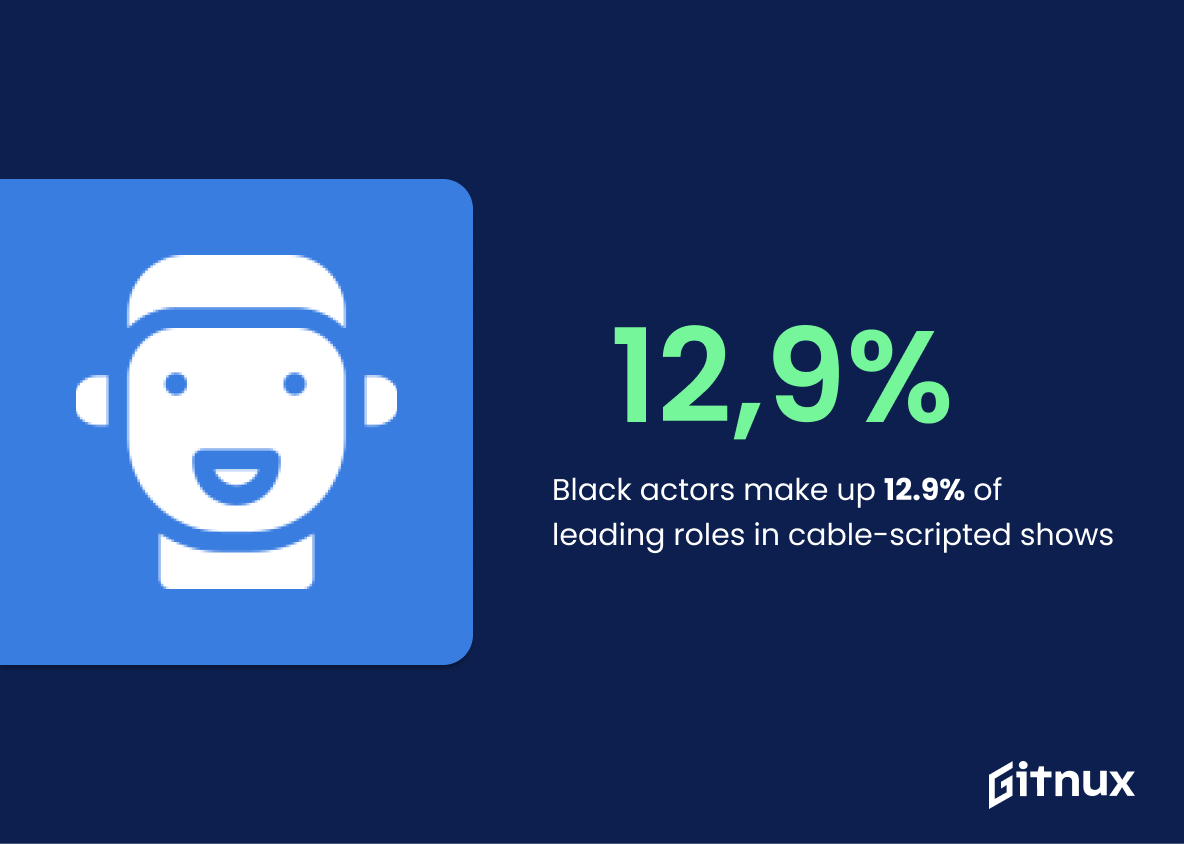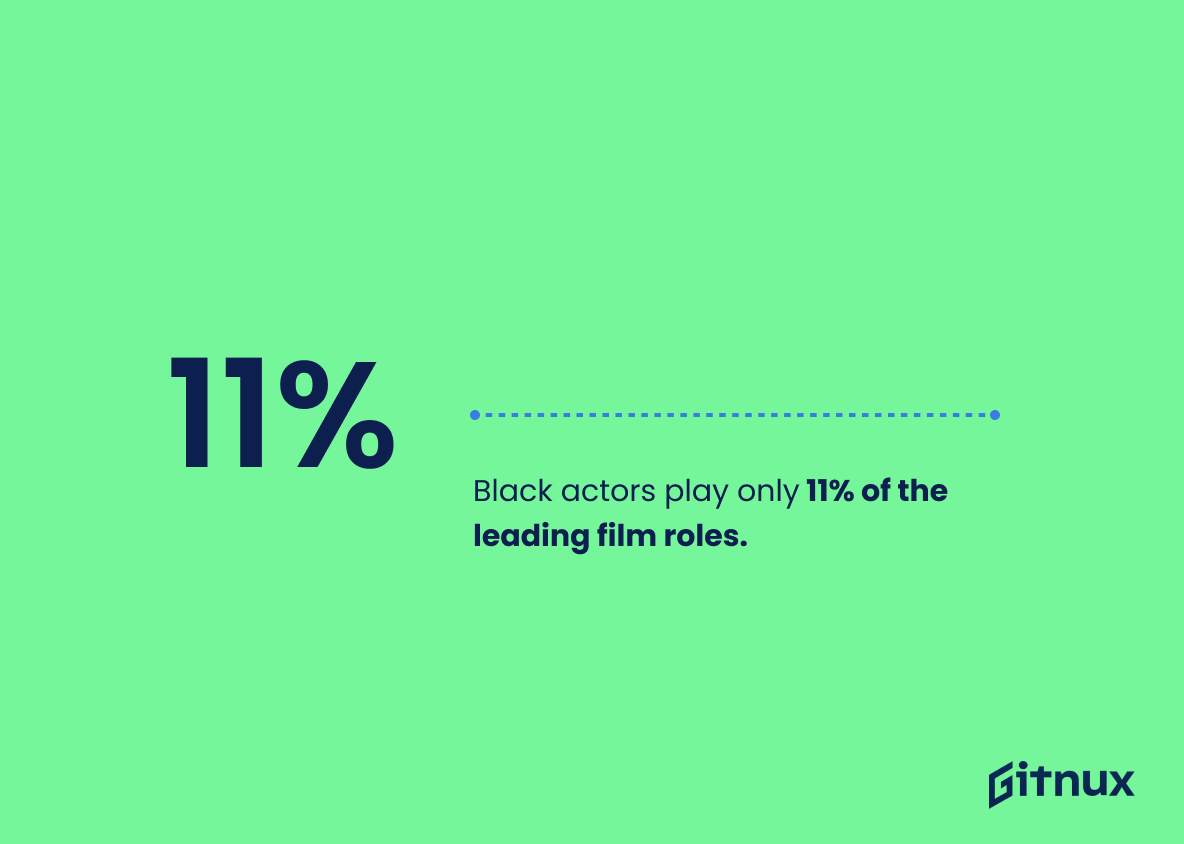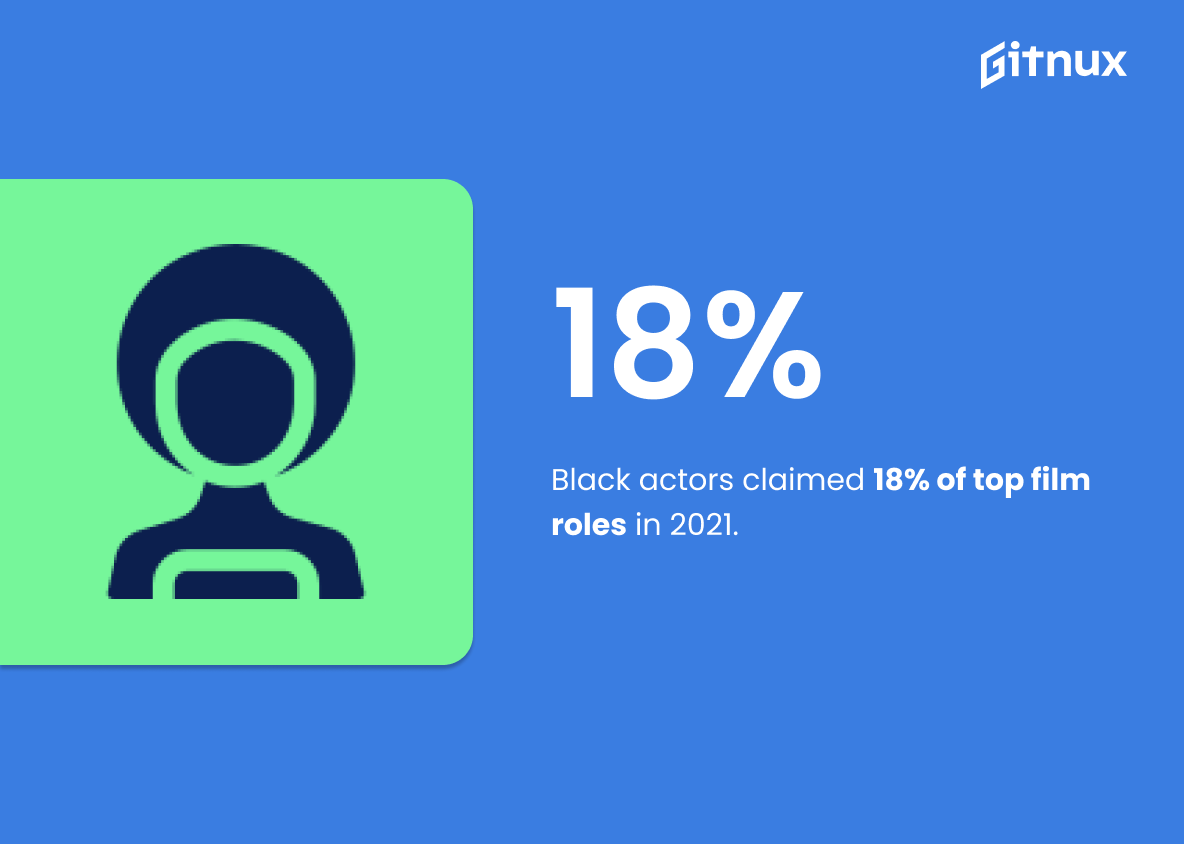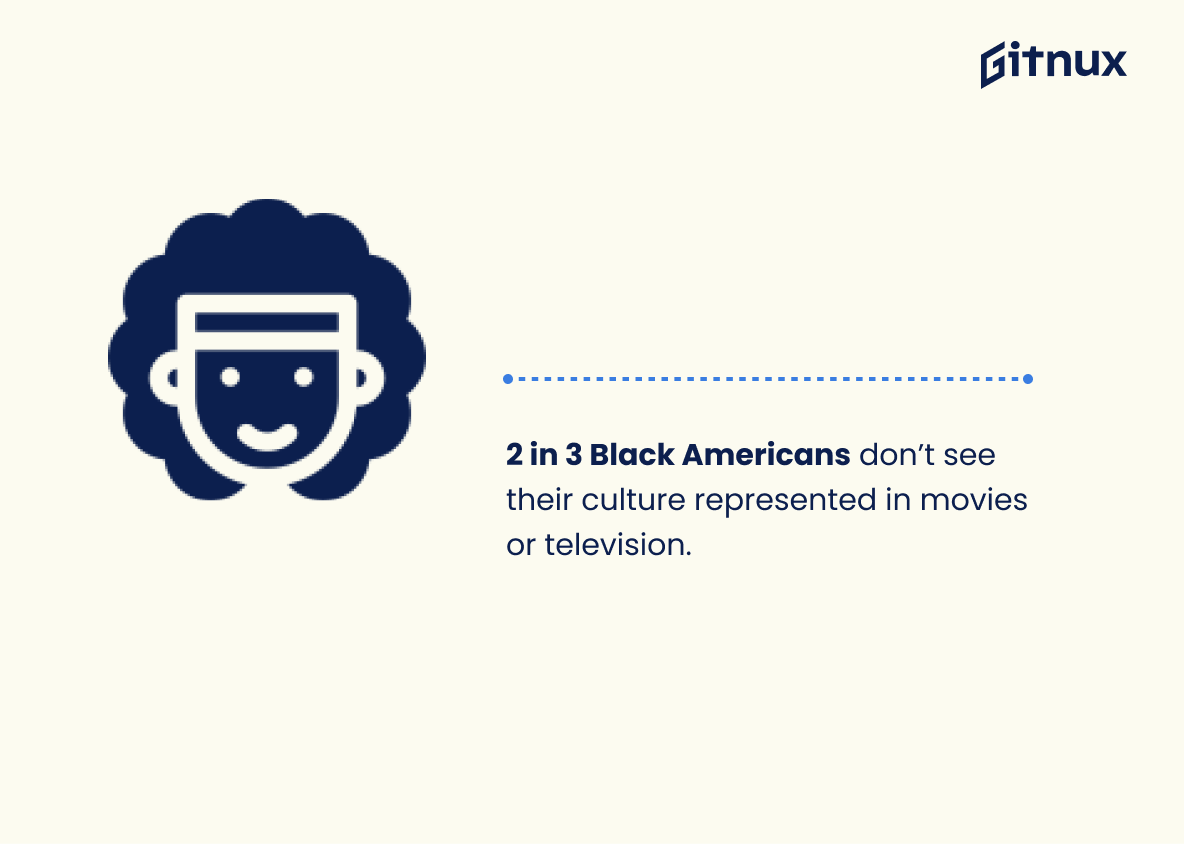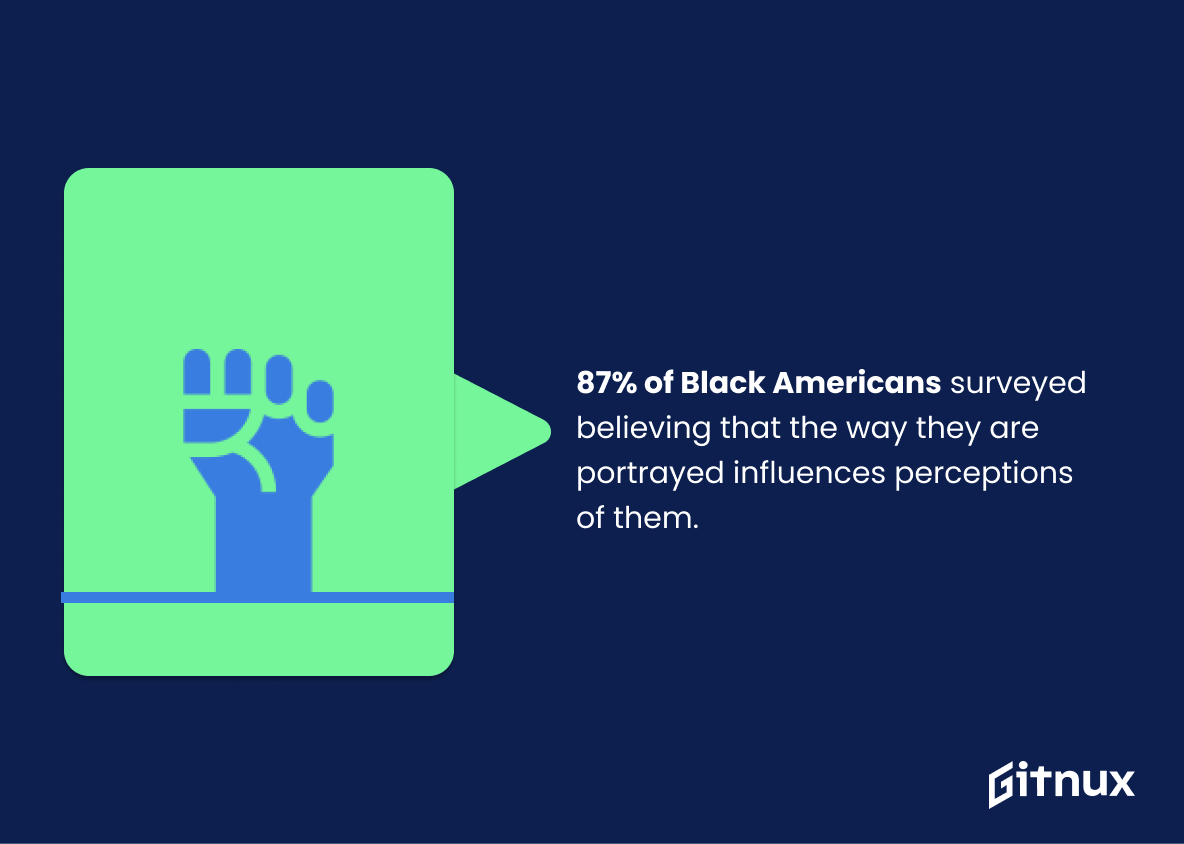The film industry has long been criticized for its lack of representation of people of color. Despite the fact that people of color make up a significant portion of the population, they are often underrepresented in film. This lack of representation can have a significant impact on how people of color are perceived in society.
In this article, we will be looking at the statistics of black representation in film and discussing the implications of these numbers. We will also be exploring the efforts being made to increase black representation in film and the potential impact this could have on the industry.
Black Representation In Film: The Most Important Statistics
In 2014, 78.9% of DC and Marvel comic book creators were white, 11.5% were Hispanic, 6.8% were Asian, and only 1.2% were Black.
2 in 3 Black Americans don’t see their culture represented in movies or television.
Black Representation In Film: Statistics Overview
Black actors make up 12.9% of leading roles in cable-scripted shows, but only 6% of writers, directors and producers of U.S.-produced films are Black.
This statistic highlights the disparity between the representation of Black actors in film and the representation of Black writers, directors, and producers. This is important because it shows that while Black actors are being given more opportunities to be seen on screen, they are not being given the same opportunities to create and shape the stories being told.
This is an issue of representation and inclusion that needs to be addressed in order to create a more equitable and diverse film industry.
Black actors are significantly underrepresented in leading film roles, playing only 11% of these roles and often being funneled to race-related projects with lower investment.
Despite the success of certain films and TV series with Black leads, Black actors are still not receiving the same opportunities as their white counterparts.
This disparity in representation and investment can lead to a lack of diversity in the film industry, and a lack of representation for Black audiences.
In 2014, 78.9% of DC and Marvel comic book creators were white, 11.5% were Hispanic, 6.8% were Asian, and only 1.2% were Black.
This highlights the lack of diversity in the superhero genre, which is one of the most popular film genres. This lack of diversity means that Black people are not adequately represented in the media, which can lead to negative stereotypes and a lack of understanding of Black culture.
The majority of respondents disagreed with African Americans being well-represented in comic book movies, despite 80% of respondents claiming to have read comic books.
Even though there has been progress in the form of popular films like Black Panther, there is still a long way to go in terms of representation.
7 out of 11 Disney princesses are white, while people of color are often depicted as ‘other’.
There is a lack of representation of people of color in film, and when they are represented, they are often portrayed in a negative light.
This perpetuates negative stereotypes and can have a negative impact on how people of color are viewed in society.
A study found that TV exposure had different impacts on self-esteem for Black girls, Black boys, white girls, and white boys, with Disney movies playing a large role in Black people’s self-esteem.
Media representation can have an impact on how people view themselves and their own self-esteem. This highlights the importance of having accurate and positive representation of Black people in film and other media.
Black actors claimed 18% of top film roles in 2021, representing a slight decrease from the previous year but still being overrepresented in comparison to the general population.
While there has been some progress in increasing representation, there is still a long way to go in order to achieve true parity.
People of color accounted for nearly 40% of lead actors in top films in 2021, roughly the same as the all-time high of 39.7% in 2020.
The film industry is making strides towards more diverse representation in lead roles. This is a positive sign for the future of representation in film, as it shows that the industry is beginning to recognize the importance of including people of color in lead roles.
2 in 3 Black Americans don’t see their culture represented in movies or television.
There is a lack of representation of Black Americans in film and television, and there is a need for more stories that accurately represent their culture and experiences.
This lack of representation can have a negative impact on how Black Americans are perceived and can lead to further marginalization.
91% of Americans surveyed believe that media has the power to influence society, with 87% of Black Americans surveyed believing that the way Black Americans are portrayed in the media influences perceptions of them in the real world.
The majority of Americans understand the power of media to shape public opinion and how this can have a negative effect on how Black Americans are perceived in the real world.
Conclusion
In conclusion, it is clear that there is a lack of black representation in film. While there have been some improvements in recent years, there is still a long way to go before we can truly say that black representation in film is equal to that of other races.
We must continue to push for more diversity in the film industry, and ensure that black stories are being told in an authentic and meaningful way. Only then can we begin to see true progress in the representation of black people in film.
References
1 – https://news.asu.edu/20220203-creativity-black-representation-film-tv-still-needed-behind-scenes#:~:text=Recent%20studies%20show%20that%20Black,U.S.%2Dproduced%20films%20are%20Black.
2 – https://www.mckinsey.com/featured-insights/diversity-and-inclusion/black-representation-in-film-and-tv-the-challenges-and-impact-of-increasing-diversity
3 – https://www.cbc.ca/news/canada/montreal/diversity-superhero-genre-creators-1.5839698#:~:text=Tim%20Hanley%2C%20a%20comic%20book,per%20cent%20who%20were%20Black.
4 – https://www.questionpro.com/blog/the-black-superhero/
5 – https://shgreenwichkingstreetchronicle.org/115987/opinions/disneys-lack-of-diversity-and-use-of-racial-stereotypes-a-tale-as-old-as-time/
6 – https://shgreenwichkingstreetchronicle.org/115987/opinions/disneys-lack-of-diversity-and-use-of-racial-stereotypes-a-tale-as-old-as-time/
7 – https://socialsciences.ucla.edu/wp-content/uploads/2022/03/UCLA-Hollywood-Diversity-Report-2022-Film-3-24-2022.pdf
8 – https://socialsciences.ucla.edu/wp-content/uploads/2022/03/UCLA-Hollywood-Diversity-Report-2022-Film-3-24-2022.pdf
9 – https://www.usatoday.com/story/entertainment/movies/2020/09/17/study-black-americans-no-representation-movies-tv/3476650001/
10 – https://www.usatoday.com/story/entertainment/movies/2020/09/17/study-black-americans-no-representation-movies-tv/3476650001/
